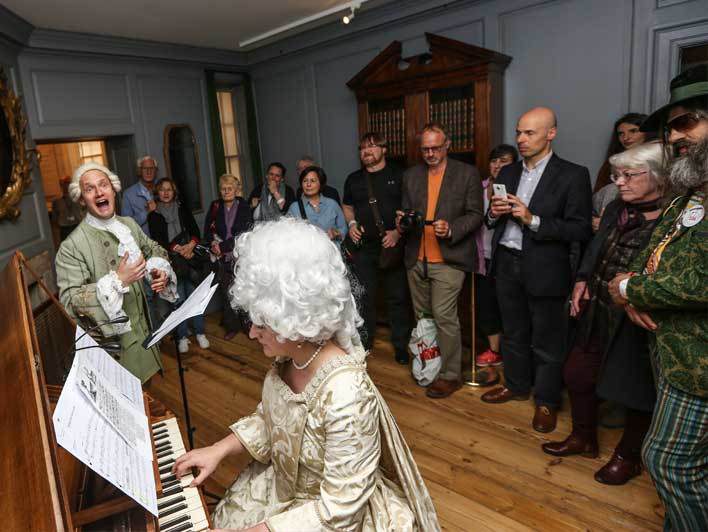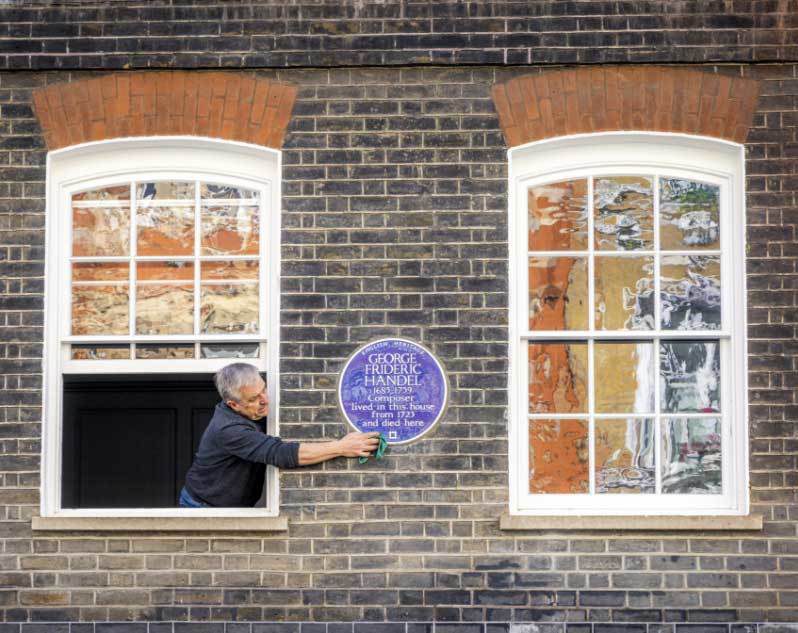ACIS AND GALATEA (HWV 49a)
Libretto: John Gay (with contributions from Alexander Pope and others)
First performance: Unknown, but probably Summer 1718, Cannons, Edgware.
Synopsis

Act I
A group of youths and nymphs celebrate their carefree life and the joys of nature. Among their number is Galatea, who cannot join in their happinness as she is separated from her love Acis. She attempts to persuade the birds to cease their cheerful song as they awaken her desire for him.
Elsewhere, Acis is seeking his Galatea. His friend Damon tries to persuade him to abandon his search and join his fellows in their celebrations. But Acis now sees Galatea and and praises her beauty.
The two are re-united and declare their love for each other.

Act II
But their happiness is short-lived. The giant Polyphemus comes stalking though the forest, intent on having Galatea for himself, but she rejects his advances. The youth Coridon advises Polyphemus to be more gentle in his wooing. But Acis leaps to Galatea’s defence. Damon once more reminds him that love is fleeting, but Galatea interrupts him and declares her constancy to Acis.
The two now declare their fidelity to each other, but the jealous Polyphemus interrupts them. He hurls a rock at Acis and kills him.
The young people mourn his death, and are joined in lamentation by Galatea. They try to comfort her, and remind her that with her divine powers she can save Acis. Galatea summons her powers and transforms the lifeless Acis into a beautiful fountain.
Context
Handel had not written any new operas for the 1716-1717 season, though both Rinaldo and Amadigi di Gaula were revived. On 17th July 1717 King George I boarded his royal barge at Westminster and travelled as far as Chelsea, where he arrived at about 11pm and went ashore for supper. Many other boats and barges joined in the flotilla, and among them was one carrying 50 musicians performing new music written by Handel and commissioned by the King. This was the first performance of the famous Water Music, which immediately became one of the composer’s most famous works.
Later in the year, Handel left the home of his patron Lord Burlington to become Composer-in-Residence for James Brydges, Earl of Carnarvon and later the 1st Duke of Chandos. Brydges had built a fine house in Edgware, just north-west of London, called Cannons, and Handel joined the German composer Johann Christoph Pepusch who was Brydges’ Master-of-the-Music. Almost immediately Handel wrote two anthems to be performed in St. Lawrence’s Church at Cannons, and eventually completed 10 anthems known now as the ‘Chandos Anthems’. He also wrote music for private performances, including Acis and Galatea and Esther, the first English oratorio.
Details of the first performance of Acis and Galatea are scant, but the original autograph score survives and tells us much about the orchestral forces and singers available to Handel during his time at Cannons. The work is firmly in the pastoral tradition that Handel had attempted in a more public way with Il Pastor Fido in 1712, but which had not been a success. This is the first full-scale work that Handel set to an English language text, and it is remarkable how well he fits this ‘foreign’ language to his always tuneful music. There are very few recitative passages, as the work is constructed mainly of a continuous series of arias.
Acis and Galatea was first heard in public in 1731, when the impressario Thomas Arne (father of the composer, also Thomas, who was to write Rule Britannia) mounted what we might now call a ‘pirated’ production. He did this at the Little Theatre in the Haymarket, London, directly opposite the King’s Theatre where Handel’s own Italian opera company was performing. Handel countered by expanding the work to a full three-act Italian opera, including music from an earlier Italian version of the same story, Aci, Galatea e Polifemo, that he had written in 1708. But this was not a success and he returned to a two-act version, often performed with the original English text, which became one of his most popular works during his lifetime.


